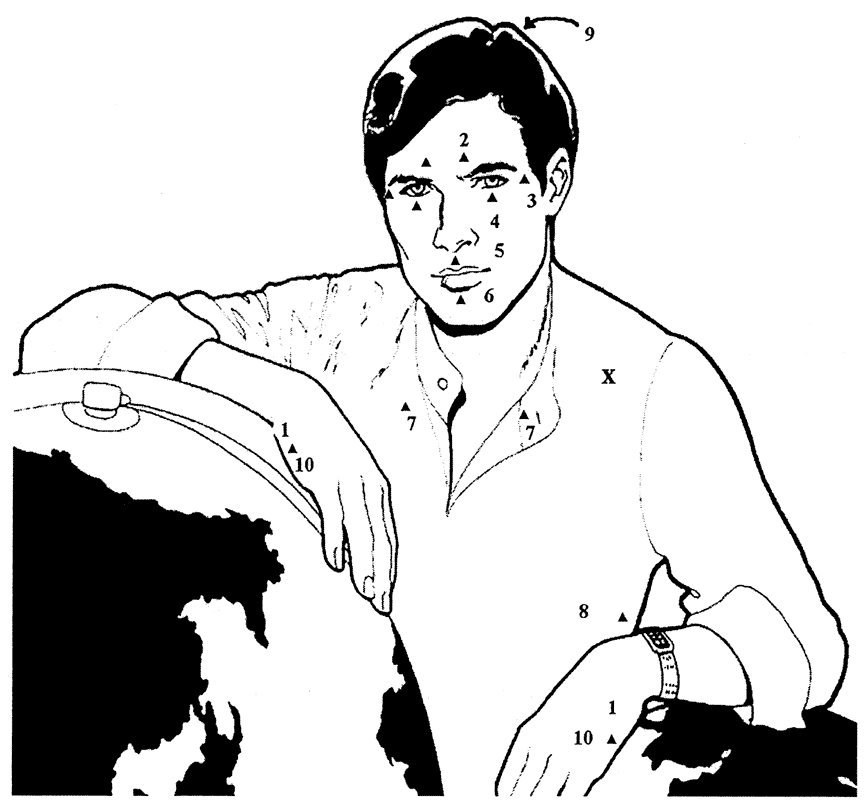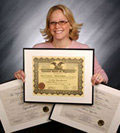Is EFT Hypnosis?
Calvin Banyan, MA, BCH, CI
I have come to believe that EFT (the Emotional Freedom Technique developed by Gary H. Craig) is hypnosis. I first learned about the technique at the NGH Convention four years ago where it was presented as a form of meridian hypnosis. I did not care for it then, but I came across it again at the next NGH convention when it was presented by Marilyn Gordon. And, because I have such a high respect for her I decided to give it another look, and I attended the workshop she presented on it. She did a number of very impressive demonstrations using the technique and I was sold. I had to give it a try.
After the convention I went back to my office and set about "EFTing" everything and everyone in my office with some impressive results. I became convinced of the power of EFT and began introducing it to my clients who came in to work on all kinds of fears, anxieties and some other issues such as cravings. This is where a problem came up. The name of our office is the Banyan Hypnosis Center for Training & Services, Inc. and as a result we get clients who are interested in using hypnosis to overcome problems and for general self-improvement. When I introduced them to EFT "a meridian hypnosis" my clients often didn't know what to think. Some were in fact disappointed and would even ask directly, "Aren?t we going to do hypnosis?"
For a while I persevered by responding that EFT was amazing and went on and sold them on the process. Then, after working with many clients using EFT, I changed my mind about what EFT is and now use a totally different approach. I now believe that EFT is more closely aligned with Mesmerism than with Classical Chinese Medicine. So I now introduce it to my clients as being a modern form of Mesmerism.
You are probably familiar with the history of hypnosis. You know of Mesmer and how he got the idea for using iron and magnets, and his theory about animal magnetism from watching Father Hell, a Jesuit Priest bring about cures by tapping people over the head with an iron crucifix. Later Mesmer's ideas about animal magnetism fell out of favor and it was all written off by the scientists of the day as being a cure caused by imagination or suggestibility. Hence, Mesmer is called the father of hypnosis, since hypnosis can be defined as a state of heightened suggestibility.
Mesmer's hypnosis did not look like what we call hypnosis today. His was a form of "waking hypnosis." The state of heightened suggestibility or hypnosis was induced in an individual who appears to be in normal waking consciousness, which she is, except that she is highly suggestible. I believe that is exactly what we are doing when we are using EFT to help our clients.
In addition to my belief that EFT is Waking Hypnosis, I would like to add that it benefits hypnotists and our clients to present it in this manner, because our clients come to us expecting hypnosis not some other form of hypnosis, such as Energy Healing/Hypnosis.
Here are some reasons why I believe that EFT and similar techniques are Waking Hypnosis rather than a meridian or energy hypnosis:
Exciting mental expectancy of a successful outcome clearly has a positive effect. I highly recommend that when using EFT you take the time to excite the imagination of your clients before applying the technique. I will always tell a few stories about how I have used to help others using EFT. This creates a mental expectation of success.
I have done EFT with clients without explaining that the feeling should be reduced, and they have experienced the emotion or problem increase in intensity. If I fail to suggest what the outcome of the procedure should be then the results are not reliable. It was this discovery that lead be to always exciting the imagination, with an expectancy that the symptoms would be reduced when I applied the technique.
I always teach my clients how to do EFT on themselves and encourage them to continue to work on other issues. When my clients return for the next session they report all kinds of success using it on many different issues. But when I have them show me how they are doing EFT they are often doing it all wrong, saying the wrong things and tapping the wrong places. Clearly suggestion is the main factor at work here rather than tapping specific points.
I am not trained in Classical Chinese Medicine. However, I have had students go through my hypnosis certification courses who are trained in Classical Chinese Medicine and they tell me that the "meridian" points that are used in EFT are not associated with the results that are experienced for the wide variety of problems that it is effective for. The most compelling reason for such success is suggestion.
So, all in all, there seems to be some significant evidence to suggest that EFT is not meridian-based hypnosis. Or, at least if meridians are involved, they seem to be less significant than the power of suggestion or placebo effect.
This should all come as good news to the Hypnotist who would like to make this powerful technique into her practice. EFT can be introduced as what I believe it to be, a form of hypnosis in which your client does not need to undergo a formal hypnotic induction in the usual sense, nor does she need to reach some level of physical or mental relaxation. Rather she can spend just a few minutes, following the hypnotist's instructions and experience almost instant success.
For more information on EFT and similar techniques and a different perspective than the one presented in this article, go to www.emofree.com.
For those who are not familiar with EFT a brief description of how I use the technique and diagram of the points to tap follow this article.
Excite the imagination by sharing examples of cases where EFT has been successfully used.
Ask your client, "Is it alright if the problem goes away today forever?" and "Is there any benefit to hanging on to this problem any longer?" When your client states that there is no benefit to having the problem any longer and that it is alright of it to go, then proceed.
Help your client bring up the feeling as strong she can. Talking about the issue and thinking about the problem, even imagining the situation or having the substance available are all useful.
Rate the feeling on a scale of 0 to 10 with 0 meaning no feeling and 10 being as bad as ever. Note that the feeling can be rated as being more than a 10, if it is worse than it has ever been.
Begin the procedure by tapping on the karate chop edge of either hand (point number 1) continuously while saying, "Even though I have this (insert problem or issue) I deeply and completely accept myself." If working with a child use, "Even though I have this (insert problem or issue) I really, really like myself." (Do this three times the first time that you use the procedure, and only one time if more passes are needed to get the feeling down to a reasonable level, usually 0.) Note that points are represented by a triangle on the graphic below.
Tap on points 2 through 10 (five to seven time each on either side of the client's body) while saying, This (insert problem or issue). For example you can use, "This fear of flying (or snakes, spiders, etc.)," or "This craving for chocolate (or ice-cream, Mellow Yellow, etc.)".
Re-rate the feeling. If the feeling is more than it reasonably should be, then repeat and continue until the feeling is taken down to a proper level.
Note that if the feeling/issue stops responding, then tap the spots on the other side of the body, while suggesting that this will continue to reduce the problem. If it again stops responding replace tapping point #1, with the place marked by an X. This is called the sore spot and is not tapped but is rubbed in a circular motion.
I have never seen this process fail. Upon using this technique in my office I teach it to my clients and have them continue to use it, by trying to bring up the problem, and if they are able to, then they are to tap it away again, until they are certain that it is gone or that they can instantly eliminate it if it were to come back again.

Note that the ▲ indicates each of the points to be tapped and the X indicates the alternative point to rub (replacing #1).



